June 8th, 2024
8minute read
The 1984 TV showAirwolfcaptured the imagination of a generation of young American males.
I counted myself among them.
Forget for a moment that such a machine would require vast amounts of profoundly expensive maintenance and support.
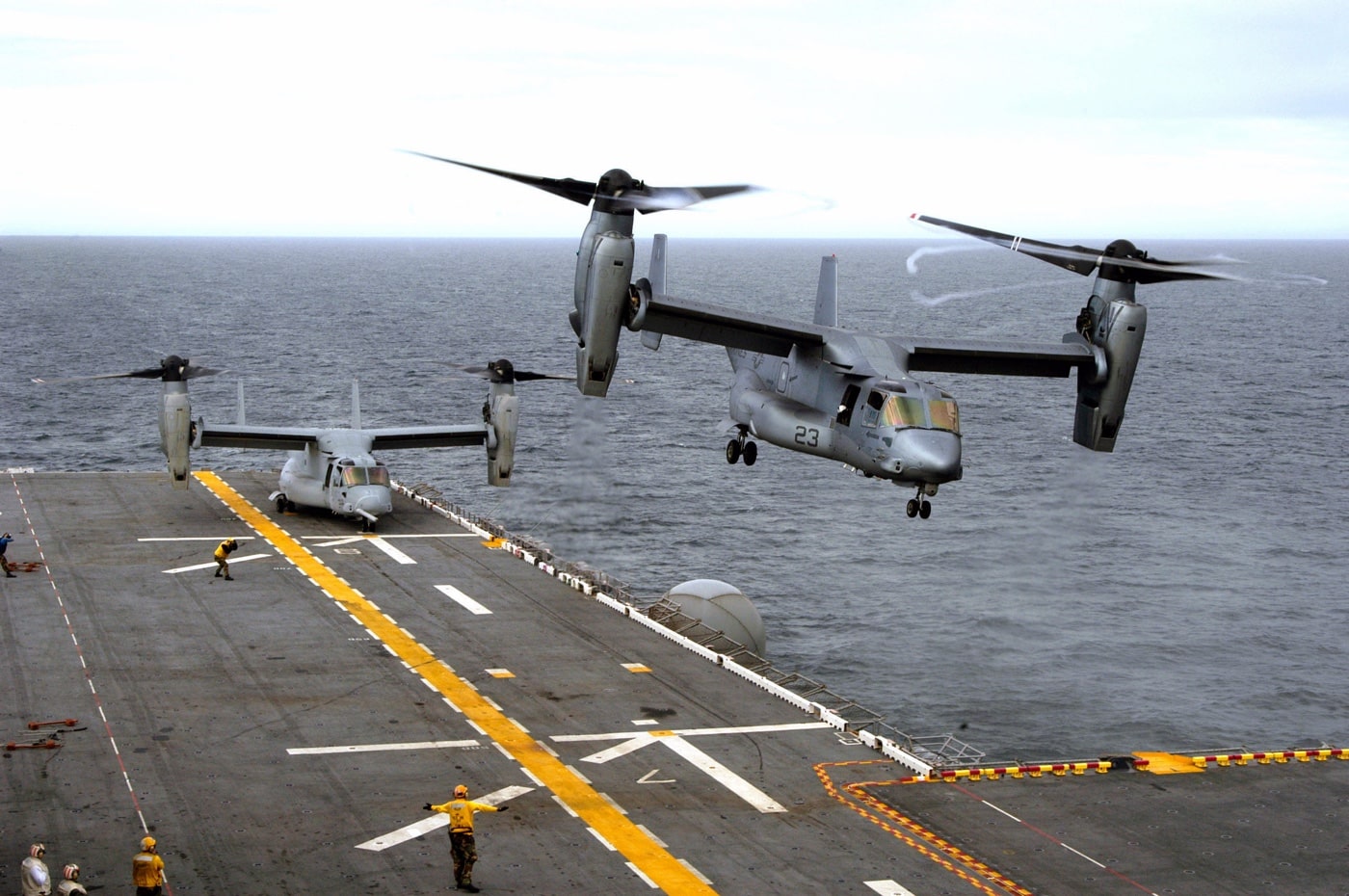
A United States Marine Corps MV-22 Osprey executes a vertical takeoff from the flight deck of the Amphibious Assault Ship USSWasp(LHD-1). Image: PH3 Timothy Bensken/U.S. Navy
Arming the thing once would cost more than Ill make in a lifetime.
Regardless, theAirwolfhelicopter looked cool.
It was gratuitous rotating eye candy.
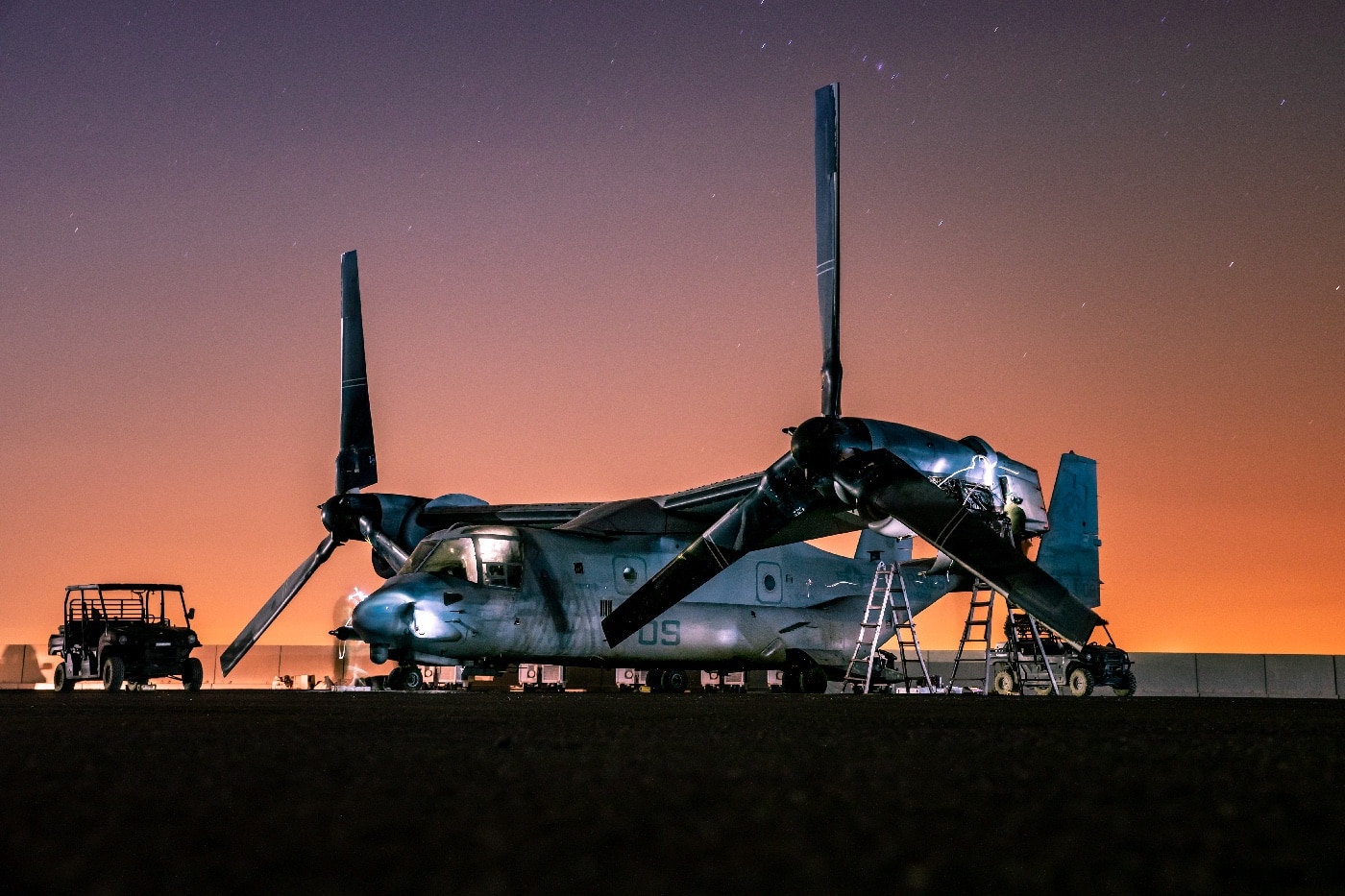
Marines assigned to Special Purpose Marine Air-Ground Task Force Crisis Response — Central Command conduct maintenance on an MV-22 Osprey in Kuwait. Image: Lance Cpl. Andrew Skiver/U.S.M.C.
Thats not only ridiculous, its against the law like the laws of the universe.
That simply cant happen.
The rotors on most western aircraft turn in a counterclockwise direction when viewed from above.
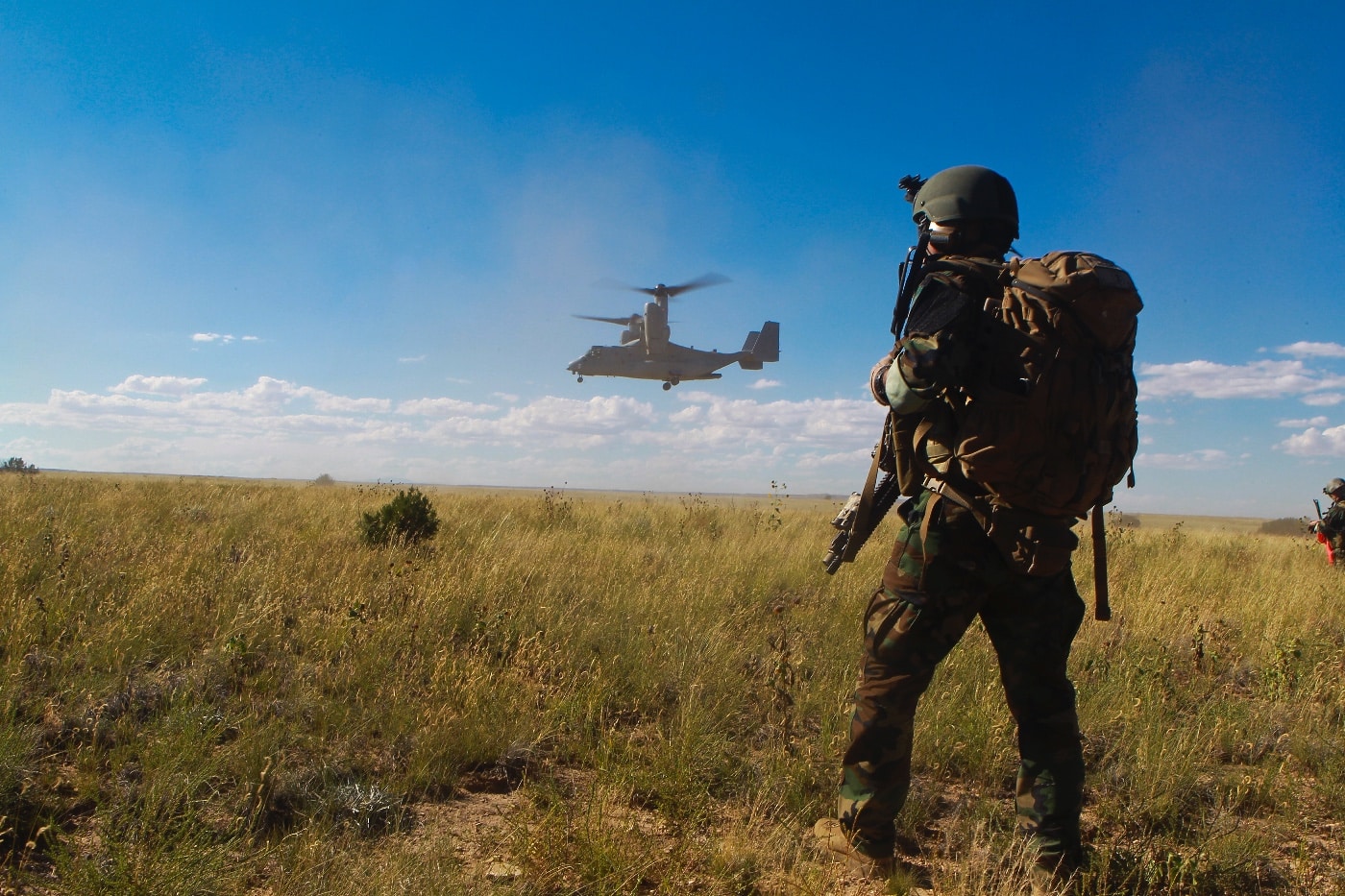
A U.S. Marine with a Marine Special Operations Battalion (MSOB) waits for a MV-22B Osprey during a training exercise in Colorado. Image: Lance Cpl. Ryan G. Coleman/U.S.M.C.
Combloc and, inexplicably, French helicopters turn clockwise.
As the advancing rotor tip approaches the speed of sound you begin to have problems with compressibility.
This is the limiting factor in helicopter airspeeds.
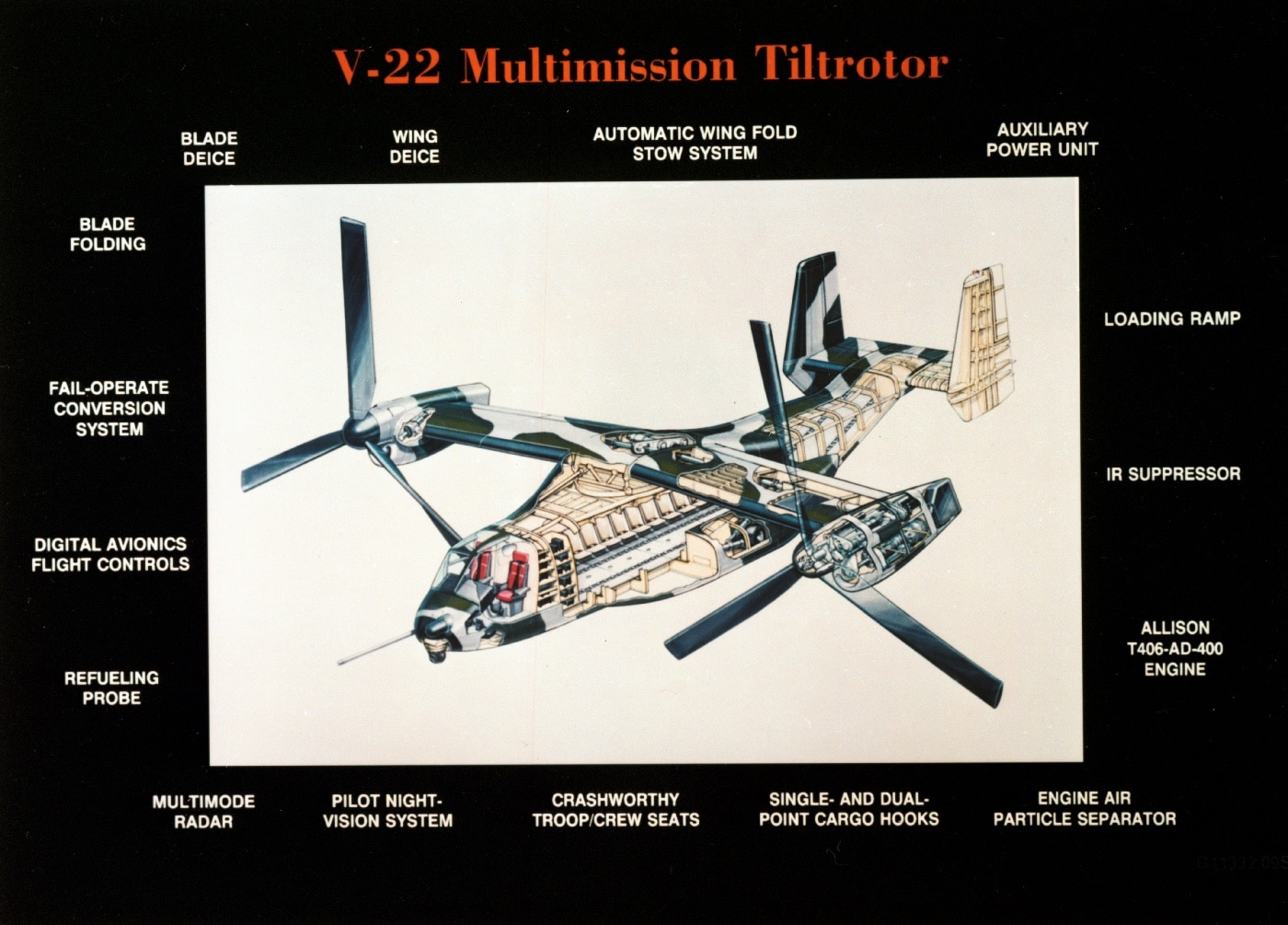
This image shows part of an informational presentation on the prototype V-22 tiltrotor aircraft, circa 1987. The V-22 was a joint development effort between Bell and Boeing. Image: NARA
Generally speaking, the more blades you have, the slower the rotor system will turn.
The slower the rotors turn, the faster the helicopter will fly.
For this reason, anAH-64 Apachewith four rotor blades is markedly faster than an OH-58 with just two.
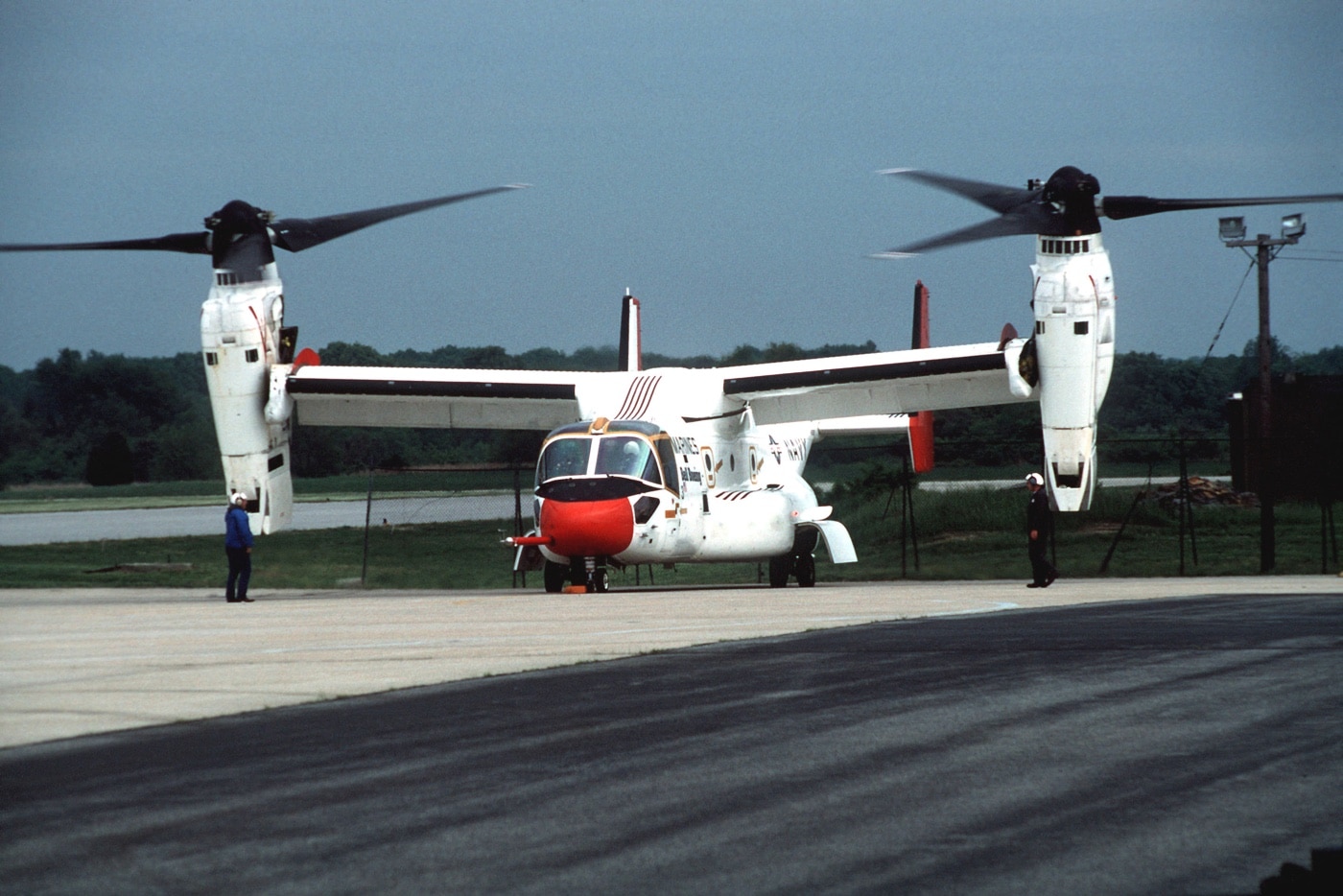
An off centerline front view of the V-22 Osprey tilt-wing test aircraft on the flightline at Naval Air Station Patuxent River. Image: PHCS Terry Cosgrove/U.S. Navy
In each case, physics invariably intervened.
Then in 1989 Bell engineers finally pulled it off with the first flight of the V-22 Osprey.
The Osprey is the helicopter that identifies as an airplane.
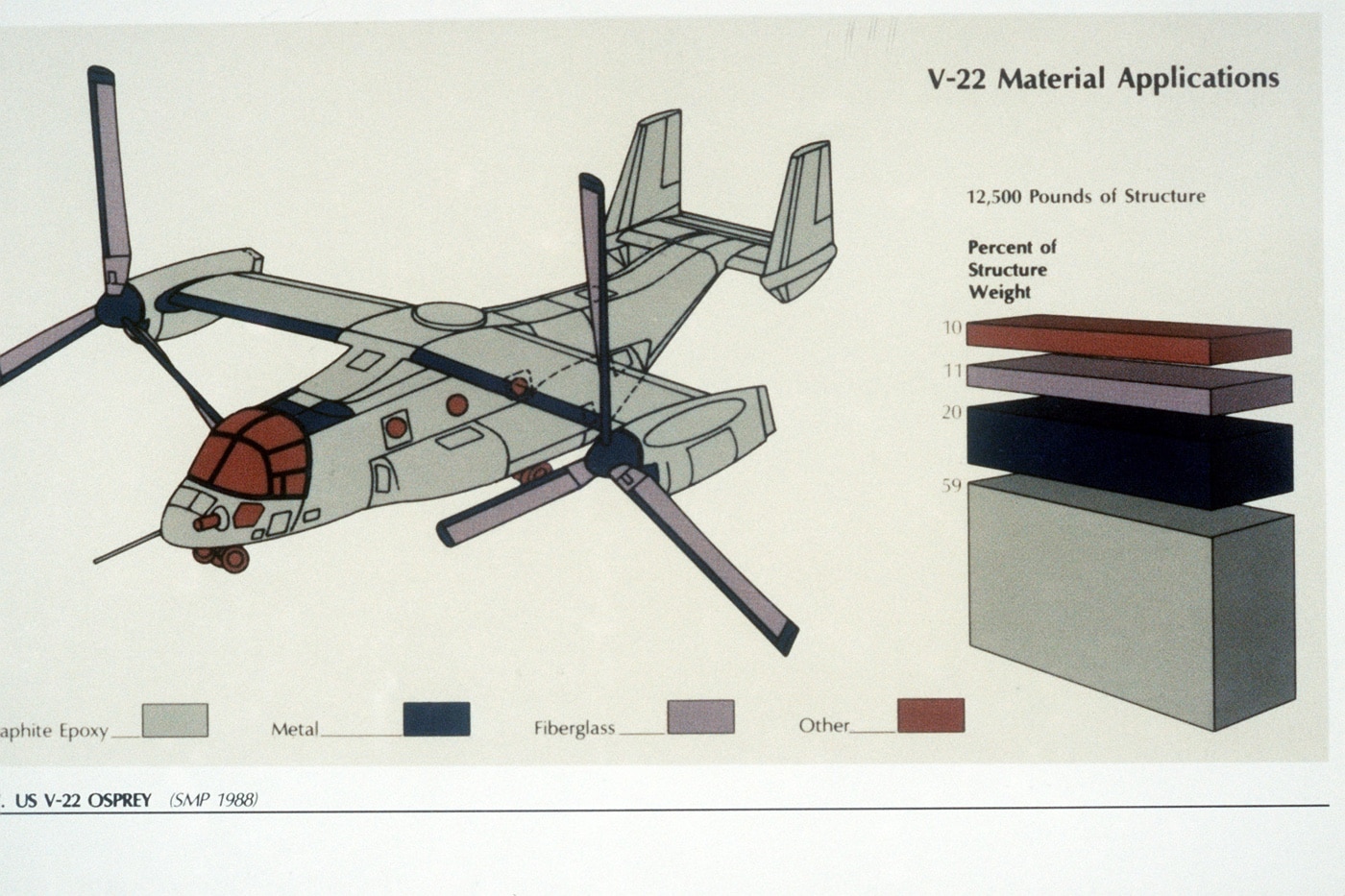
A 1988 chart depicting the advanced composite materials of the V-22 Osprey aircraft. The aircraft combines the performance of a helicopter with that of a conventional fixed-wing aircraft. Image: NARA
Technical Details
The tiltrotor V-22 Osprey is a breathtakingly complex piece of machinery.
Osprey crews call these appendages proprotors.
In the event of a single engine failure, the remaining engine still powers both proprotors.
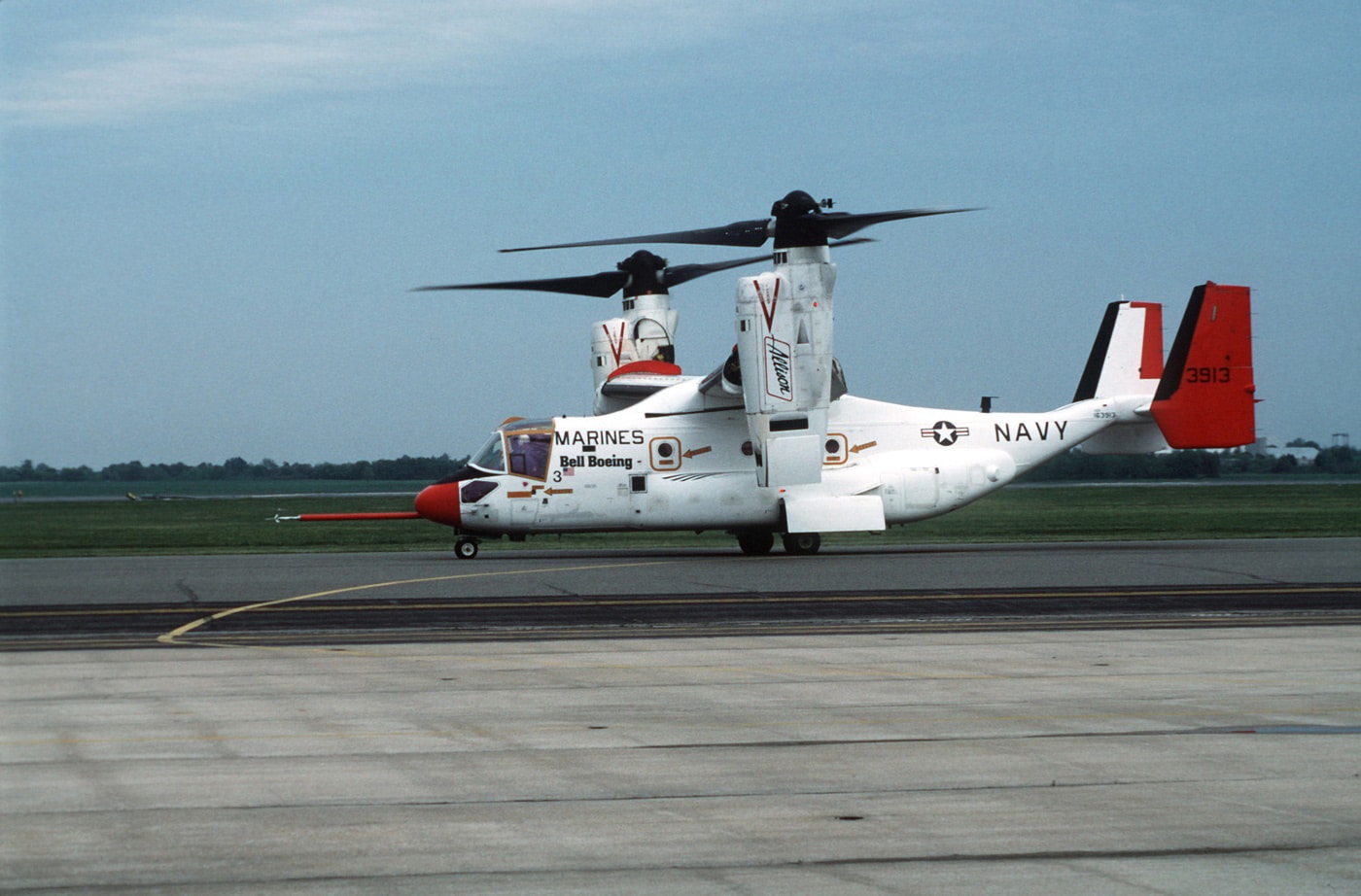
A V-22 Osprey tilt-rotor test aircraft taxiing on the flightline at Pax River on May 15, 1995. Image: PHCS Terry Cosgrove/U.S. Navy
Twin-rotor helicopters like theCH-47 Chinookoperate the same way.
Each engine drives both sets of blades independently.
Advanced composite materials account for 43 percent of the Ospreys weight.
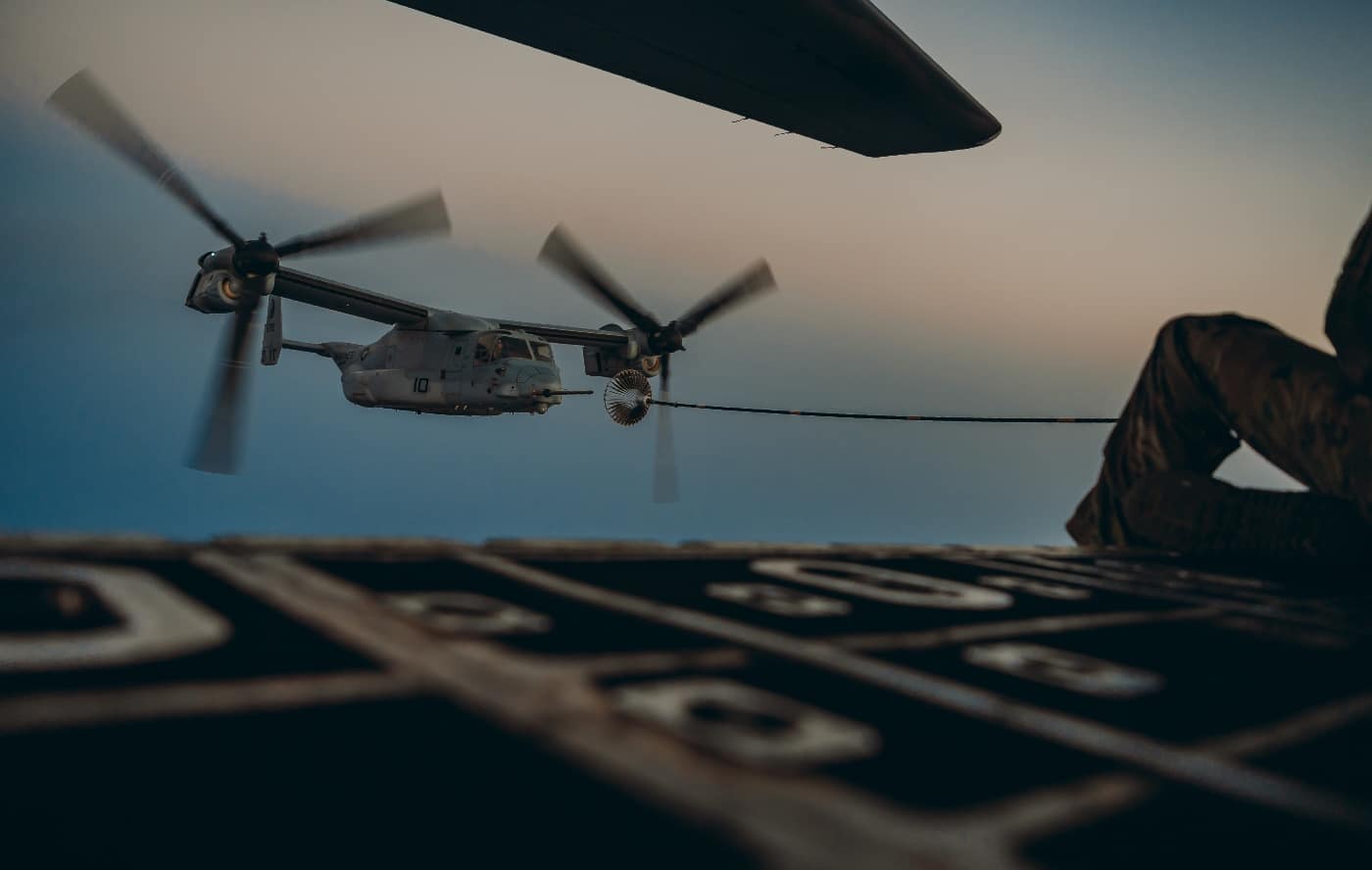
A U.S. Air Force MC-130H conducts aerial refueling for U.S.M.C. MV-22 Osprey aircraft of the 15thMarine Expeditionary Unit. Image: Staff Sgt. Trevor T. McBride/U.S.A.F.
The V-22 incorporates three redundant fly-by-wire flight control systems to enhance survival in a high-threat environment.
The aircraft is also capable of aerial refueling.
Transitioning between flight modes requires about 12 seconds.
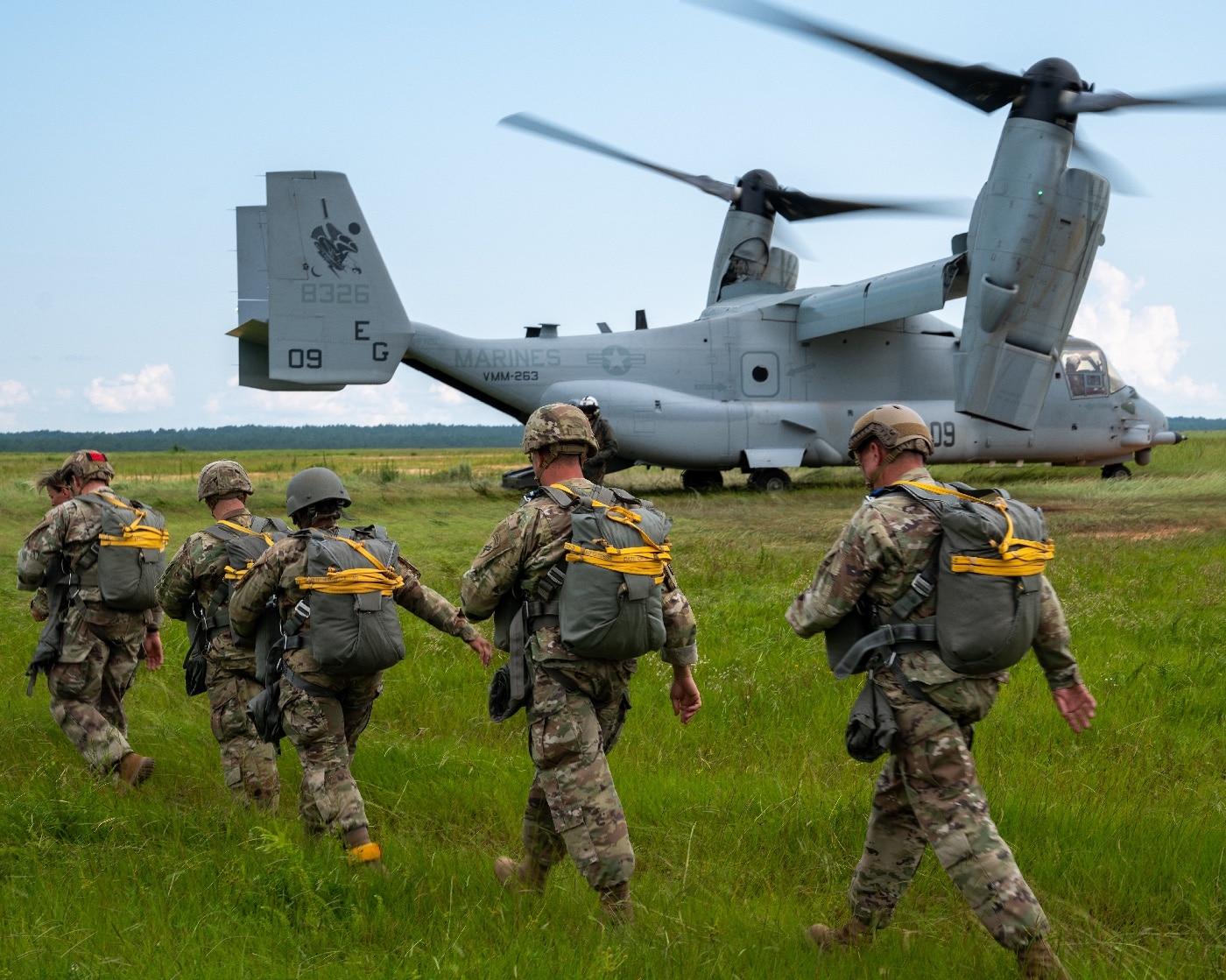
U.S. Army soldiers board a Marine Corps MV-22 Osprey aircraft as part of non-tactical airborne training at Fort Bragg, NC, July 26, 2021. Image: Col. David S. Yuen/U.S. Army
The Osprey has to land from a hover as the blades are too long to allow a running landing.
Two of the first six prototypes were lost to crashes.
By the late 1990s, flight testing at Pax River Naval Air Station was proceeding apace.

Marine pilots prepare their MV-22 for takeoff from Camp Lemonnier, Djibouti on Jan. 2, 2023. They transport combat troops and equipment within East Africa. Senior Airman Bryan Guthrie/U.S.A.F.
Then in 2000 there were a further two fatal V-22 crashes that claimed a total of 23 Marines.
This resulted in a fleet-wide grounding, detailed investigation, and fairly significant redesign.
The version of the V-22 that emerged from this process was both safer and more reliable.
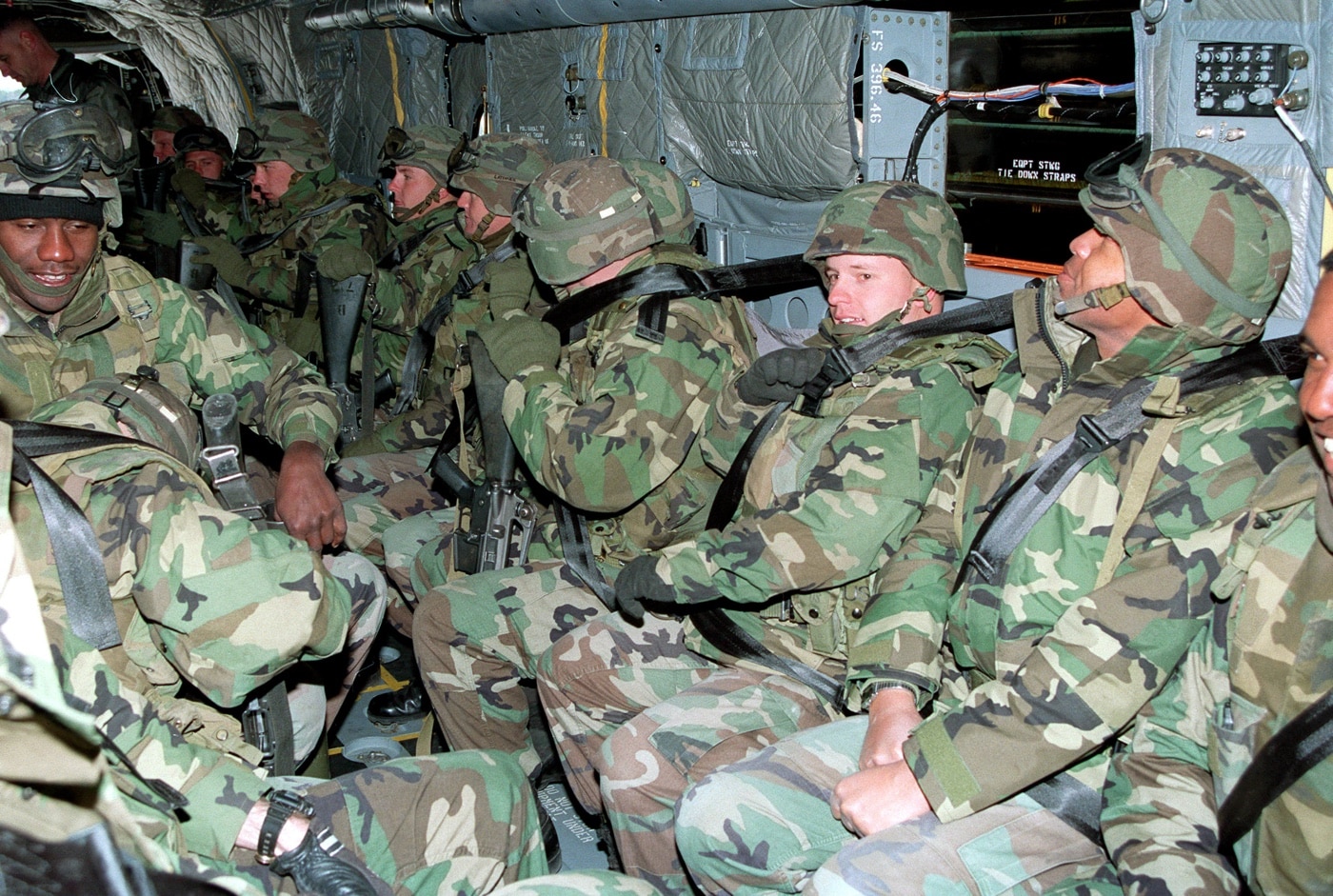
Packed tight in a MV-22 Osprey, these Marines participate in a training mission at Marine Crops Air Station New River in December of 1999. Image: Lance Cpl. Jacob Fuller/U.S.M.C.
Throughout it all, this profoundly expensive aircraft became all the more so.
Each airframe costs Uncle Sam between $84 and $110 million depending upon how you crunch the numbers.
Policy makers threatened to cancel the project regularly.
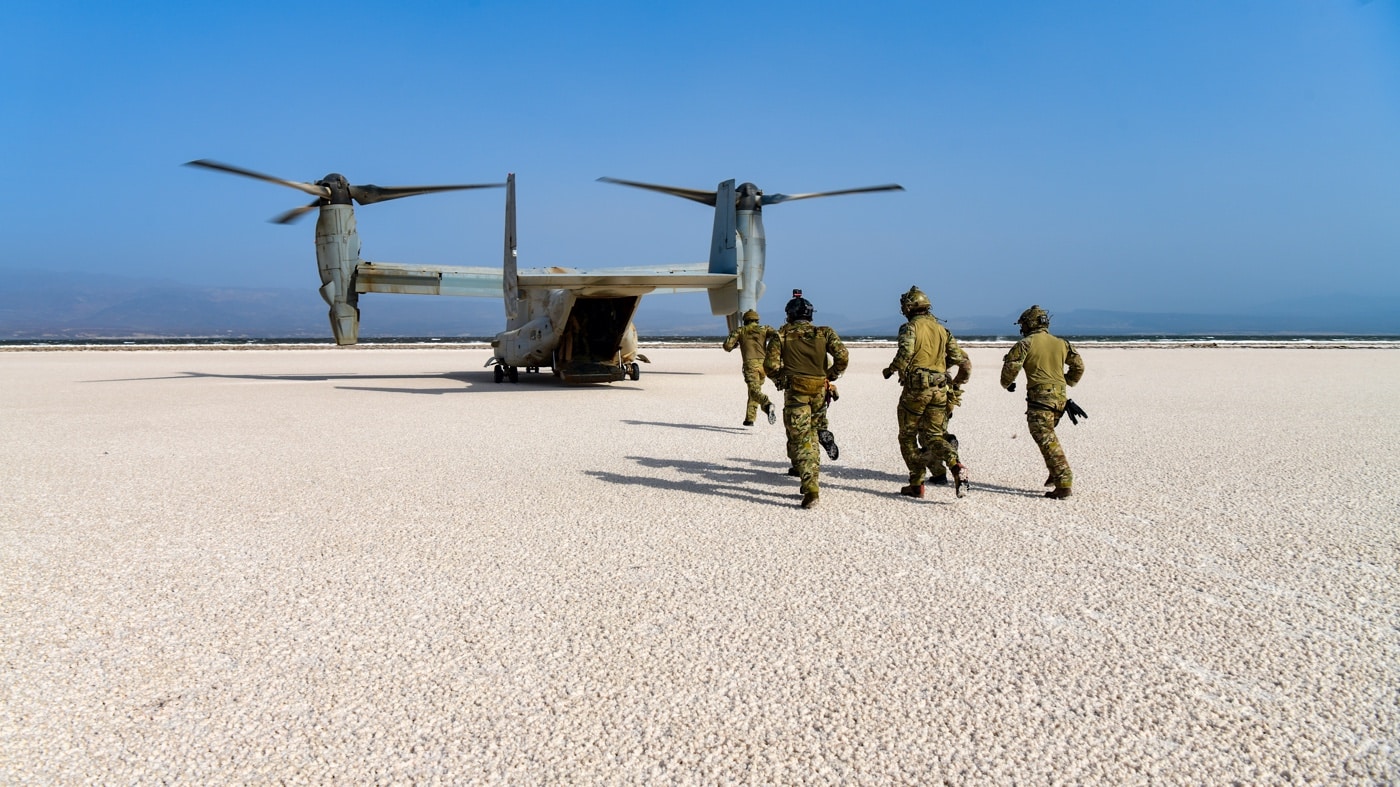
Pararescuemen with the 82nd Expeditionary Rescue Squadron load onto a V-22 at Camp Lemonnier, Djibouti. Their mission is to rescue U.S. service personnel in Africa. Senior Airman Blake Wiles/U.S.A.F.
However, todays V-22 is a capable and effective combat aircraft.
Capabilities
Marine Ospreys are designated MV-22.
USAF versions are CV-22.

Sgt. Ryan Boele (left) and Lance Cpl. Nickolas Thomsen work to remove a MV-22 engine while aboard the USSMakin Island(LHD-8). Image: Cpl. April L. Price/U.S.M.C.
The Jarheads demurred on the designation as they already called the Navys aircraft carriers CVs.
Power comes from a pair of Rolls Royce T406-AD-400 turboprop/turboshaft engines.
Maximum speed at altitude is 305 knots or 351 mph.
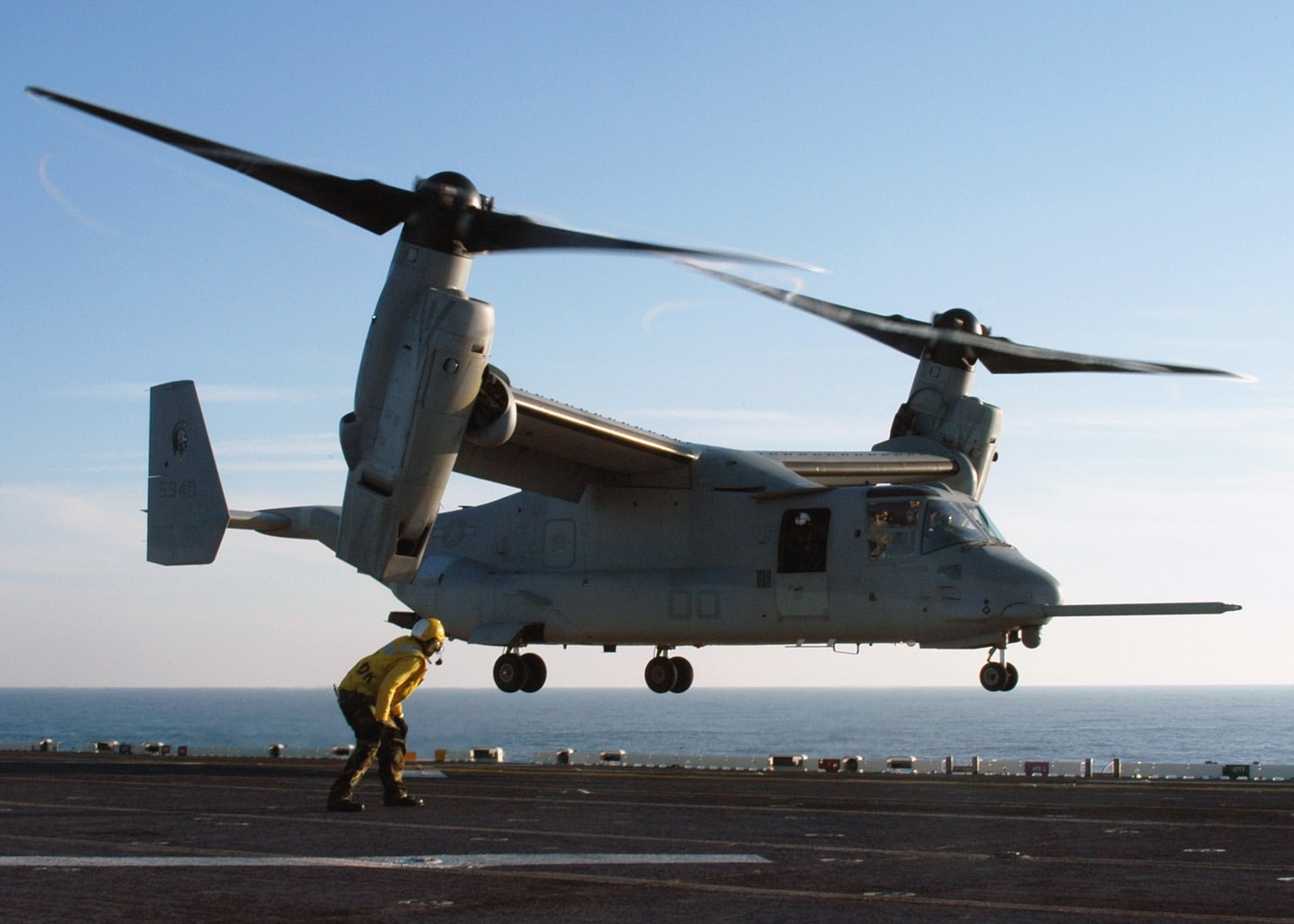
AB3 Terrell T. Washington braces himself against the rotor wash as a U.S.M.C. MV-22 Osprey lifts off from the flight deck of the USSKearsarge(LHD-3). Image: Sarah E. Ard/U.S. Navy
Defensive armament consists of an M240 .30-caliber machinegun orM2 Browning .50-calmounted on the aft ramp.
32 IDWS units were produced, and they saw combat service in Afghanistan.
However, the gun assembly weighs 800 pounds and diminishes performance and payload as a result.
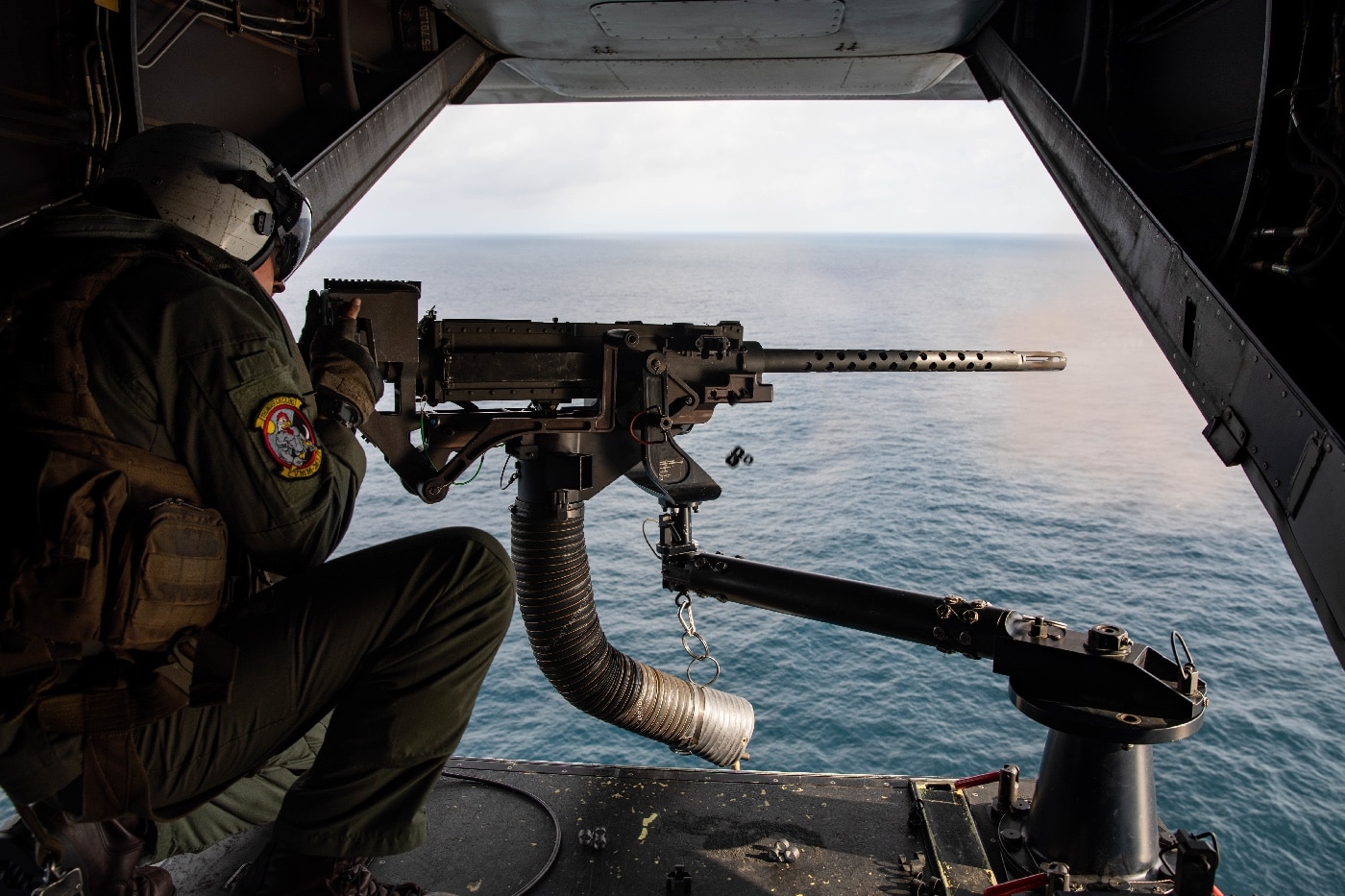
Cpl. Braden Mileski fires a .50-cal. machine gun from a MV-22 Osprey during a live-fire exercise conducted by the 22nd Marine Expeditionary Unit. Image: Cpl. Yvonna Guyette/U.S.M.C.
Advanced terrain-following radar and directional infrared countermeasures make the V-22 a potent special operations deep-penetration platform.
The V-22 has replaced the MH-53 Pave Low in Air Force special operations service.
The Marines have used the MV-22 to replace their geriatric fleet of CH-46 Sea Knights.
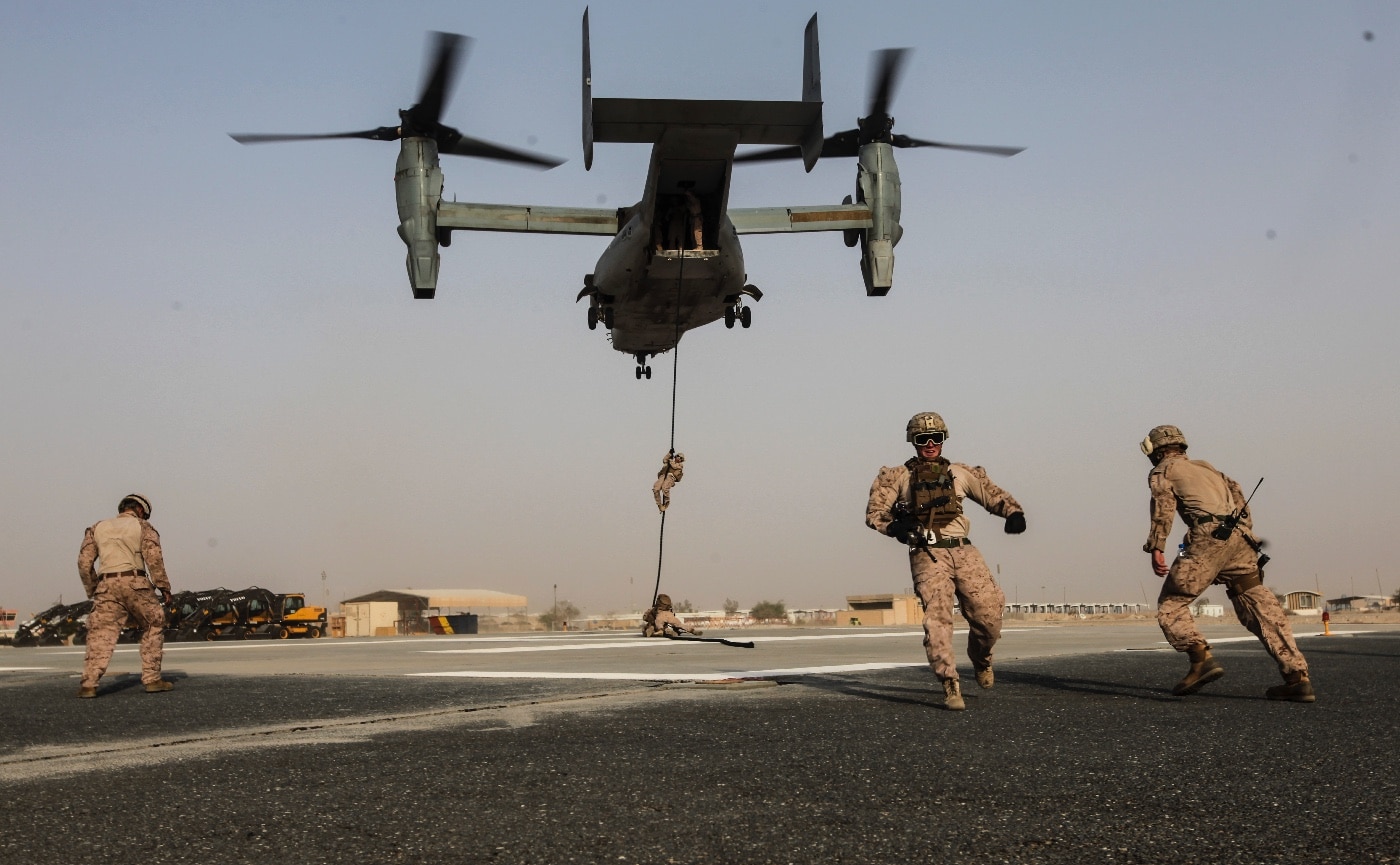
Marines with Special Purpose Marine Air-Ground Task Force — Crisis Response — Central Command (SPMAGTF-CR-CC) conduct fast rope training from an MV-22 Osprey. Image: Cpl. Leah Agler/U.S.M.C.
Ruminations
The V-22 still remains a controversial aircraft.
The astronomical price tag and unprecedented technology drive that train.
The proprotor blades fold for storage, and the wing pivots to rest alongside the fuselage.
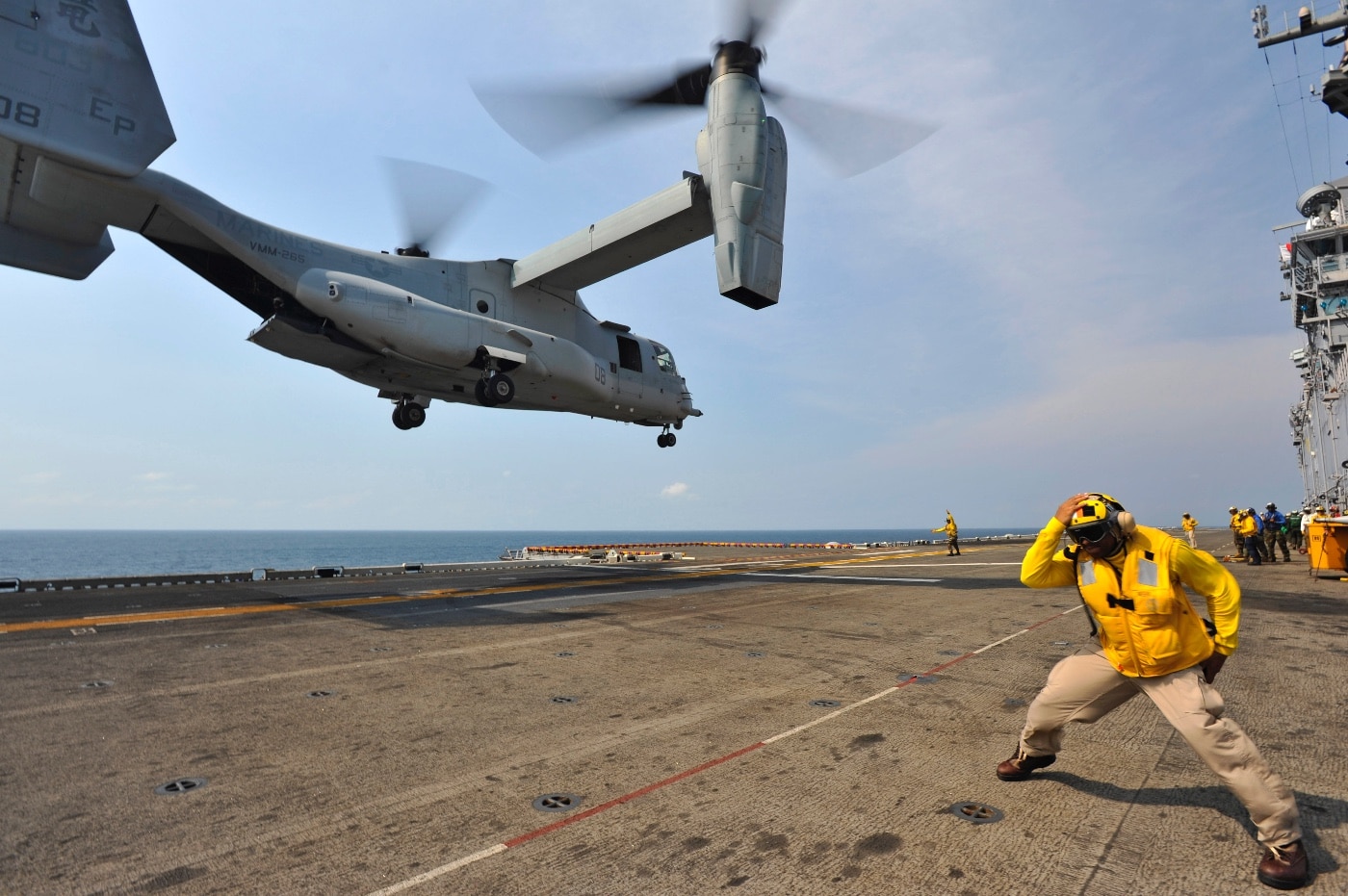
ABHC Patrick Dewberry braces himself as an MV-22 Osprey takes off from the USSBonhomme Richard(LHD-6) during the Cobra Gold exercise. Image: PHA3 Michael Achterling/U.S. Navy
This capability allows the V-22 to deploy onboard ships with limited storage space.
The V-22 has by now logged hundreds of thousands of operational flight hours.
The V-22 was originally intended for use by all four services.
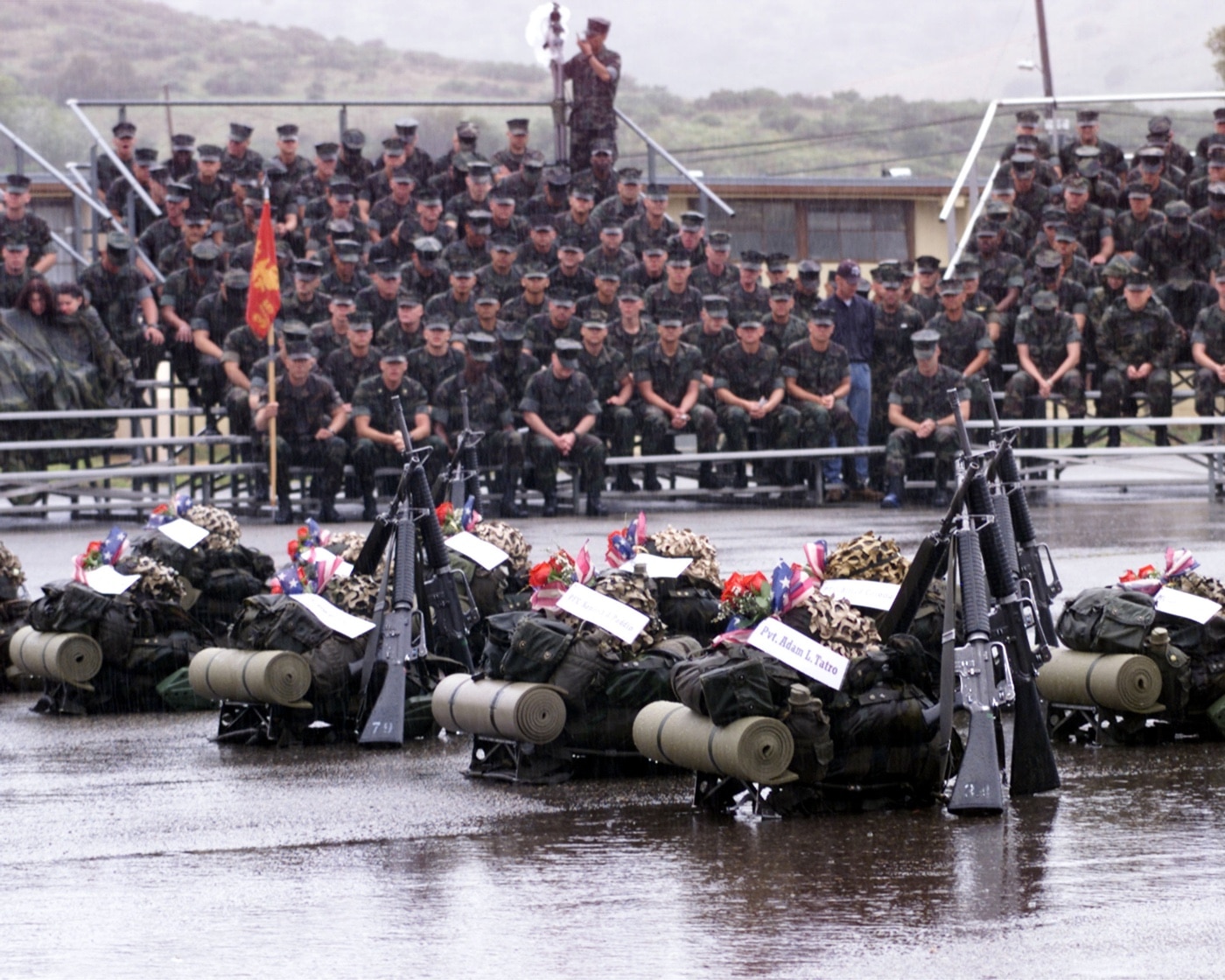
Marines killed in an MV-22 Osprey crash were represented at an April 17, 2000 memorial service by A.L.I.C.E. packs decorated with flowers and M-16A2 service rifles. Image: Sgt. Adrian Olguin/U.S.M.C.
However, the Army bowed out of the project early on for budget reasons.
Interestingly, the Big Green Machine recently announced its official replacement for the UH-60 Blackhawk helicopter.
It seems the legacy of the V-22 Osprey will indeed live on for generations to come.
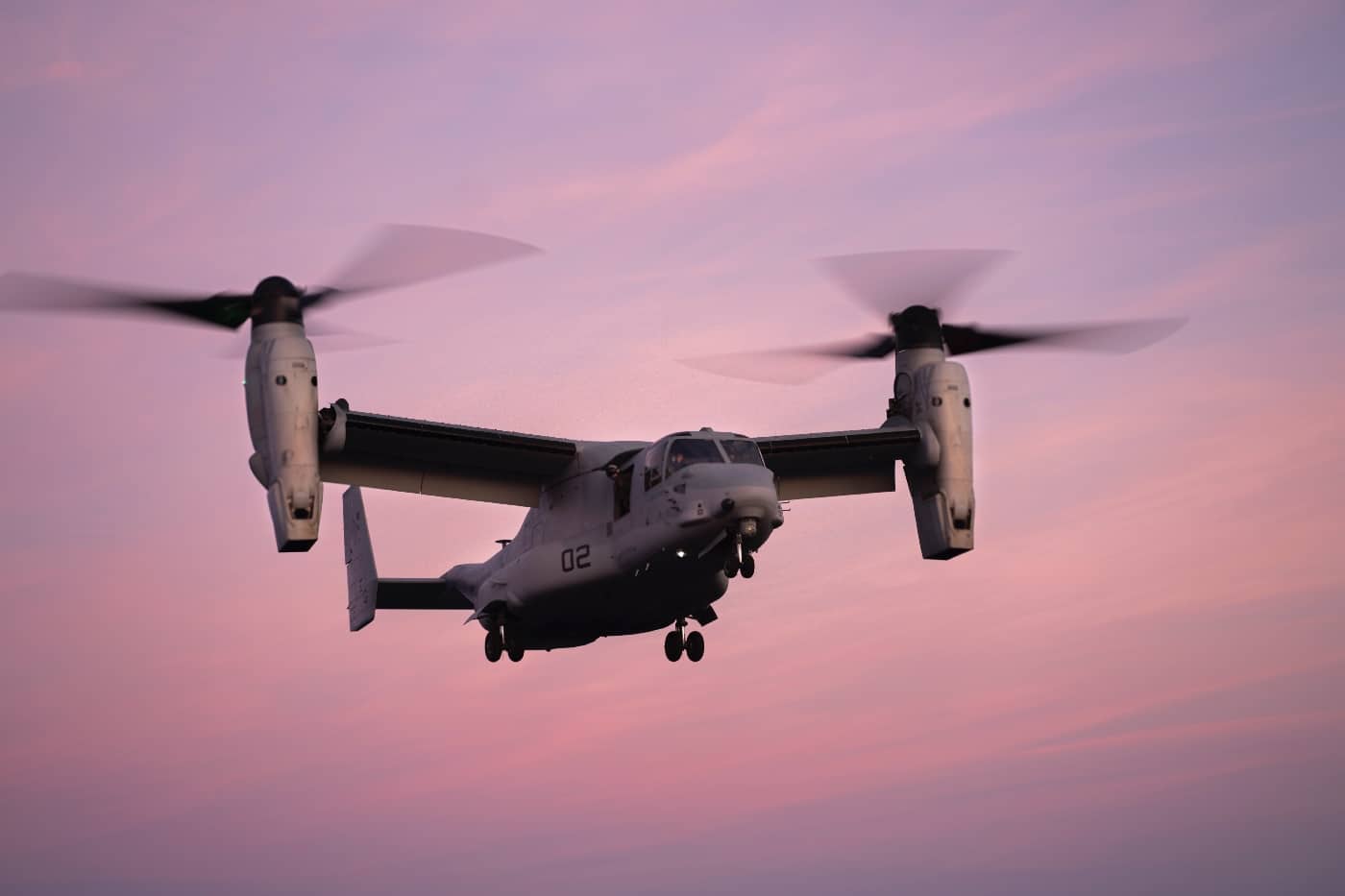
A MV-22 prepares to land aboard amphibious assault ship USSKearsarge. It is underway for an Amphibious Ready Group/MEU Exercise (AMX). Image: Staff Sgt. Brittney Vella/U.S.M.C.
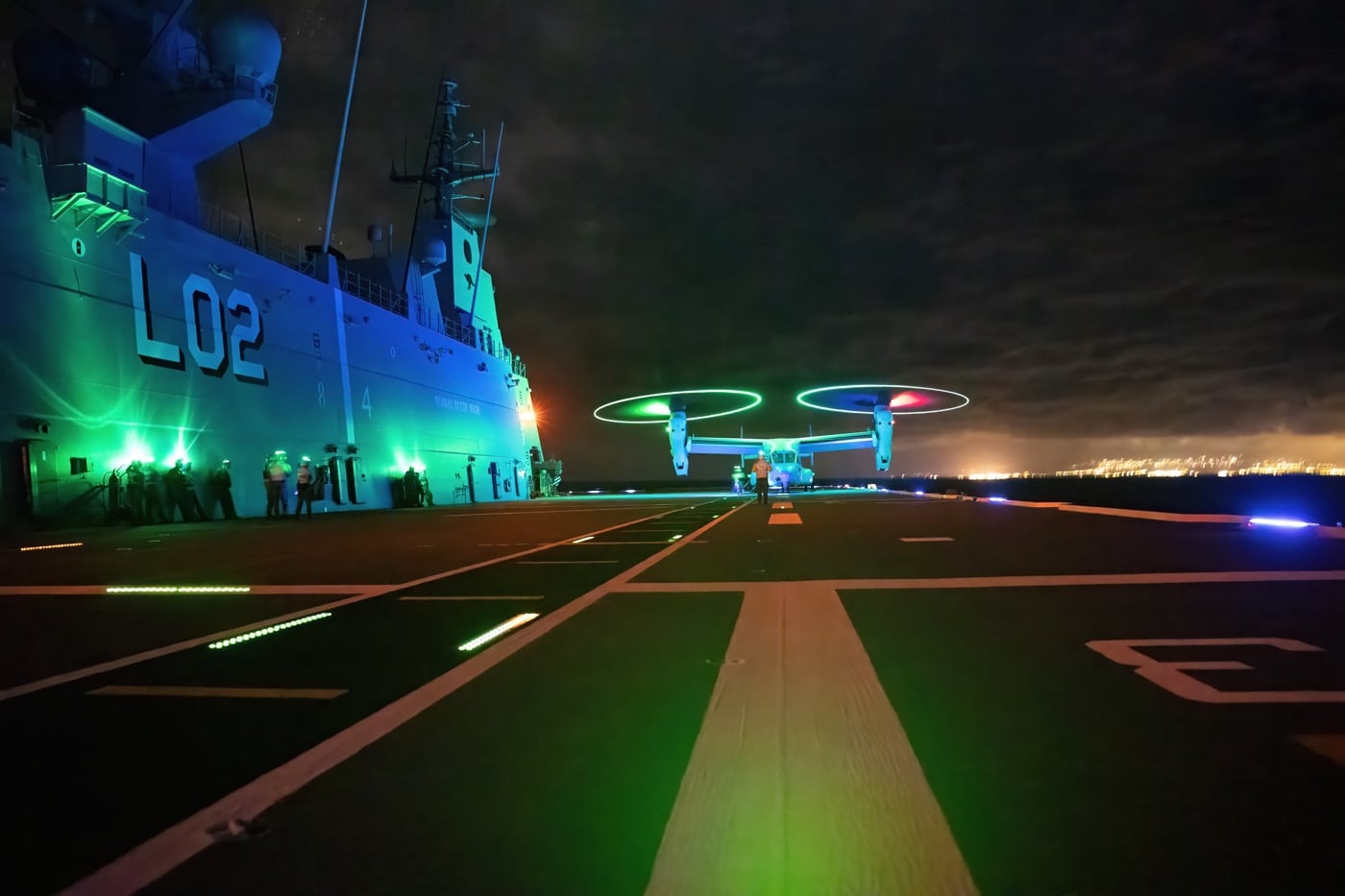
U.S. Marine Corps MV-22B Osprey lands on Royal Australian Navy HMASCanberra(L02) during an exercise. Image: Petty Officer Christopher Szumlanski/Royal Australian Navy




